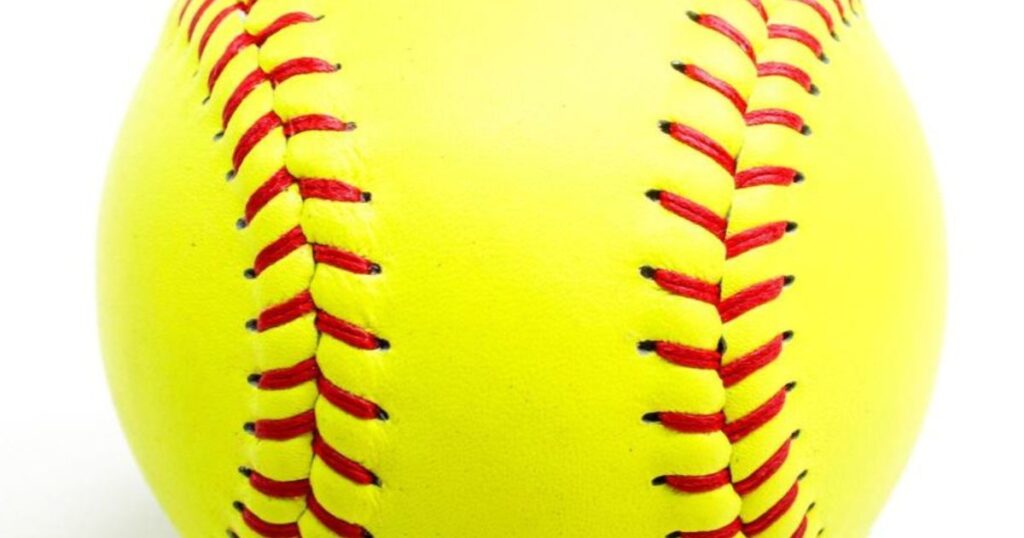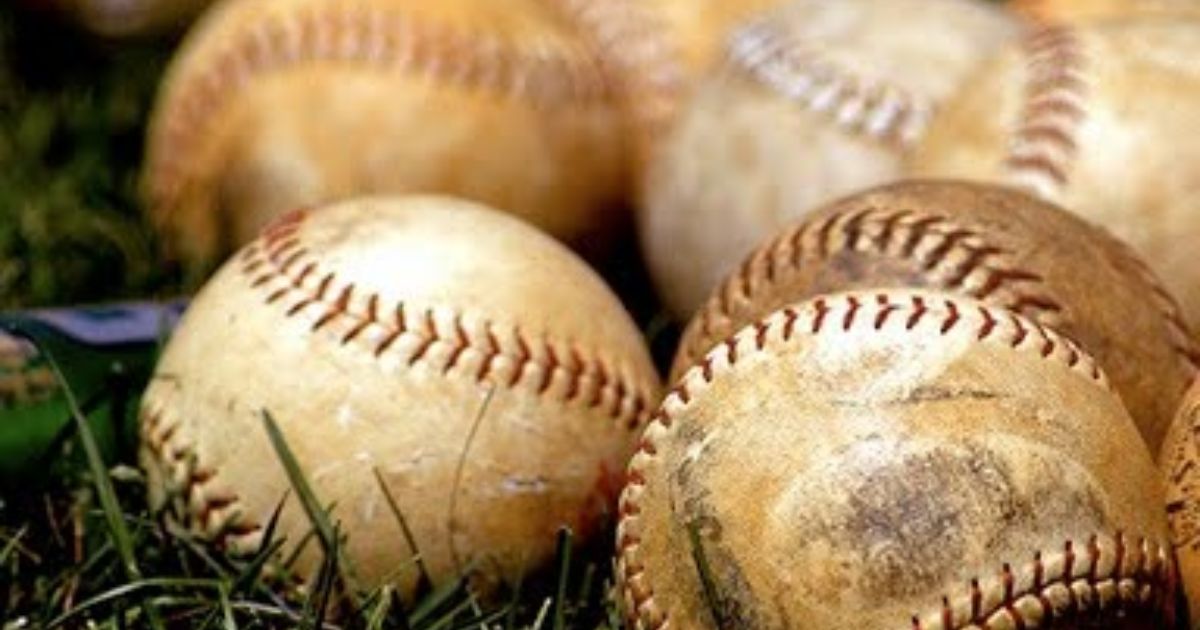Softball is a popular sport in many parts of the world, and its origin dates back to the late 19th century. Softballs, the essential equipment used in the game, have evolved significantly over the years. Have you ever wondered what’s at the heart of every unforgettable play on the diamond?
Understanding what softballs are made of is crucial for players, coaches, and enthusiasts. Dive deep into the world of softball with us as we unveil the fascinating secrets behind the materials that create the perfect pitch, the magic that transforms a leather sphere into a powerful game changer. Join us on this thrilling journey.
Softball is more than just a sport; it’s a symphony of skill, precision, and strategy.In this comprehensive article, we will delve into the composition of softballs, exploring the materials, construction techniques, and the impact of these factors on the game. Let’s begin by looking at the core components of a softball.
The Core Materials
Softballs are made of various materials, and their composition can significantly affect the performance and playability of the ball. The core of a softball is the central component responsible for its weight and bounciness. There are primarily two types of core materials used in softballs: cork and polyurethane.
Cork Core
Cork has been a traditional core material for softballs. It is lightweight and can be compressed, allowing for a degree of flexibility. The cork core is wrapped in yarn and covered with a leather or synthetic cover. This construction provides a certain level of hardness and compression, giving the ball its characteristic bounce.
Polyurethane Core
In recent years, polyurethane cores have gained popularity. Polyurethane is a synthetic material known for its durability and consistency. Softballs with polyurethane cores tend to have a more uniform bounce and are less affected by environmental conditions, such as humidity. They are often preferred in competitive play due to their reliability.
The Cover Material
The cover of a softball is the outer layer that players come into direct contact with. The cover material affects the grip, durability, and overall feel of the ball. Softball covers are typically made of leather or synthetic materials.
Leather Covers
Leather covers are the more traditional choice for softballs. They provide an excellent grip and a natural feel. However, leather covers may require some breaking in and are more susceptible to wear and tear over time.
Synthetic Covers
Synthetic covers, often made of polyurethane or other composite materials, have become increasingly popular. They offer consistent performance right out of the box and are more durable than leather covers. They are also less affected by moisture, making them suitable for various weather conditions.
Stitching and Seams

The stitching of a softball is a crucial aspect of its construction. The number and pattern of stitches on softball can affect the ball’s flight and the pitcher’s grip. There are two primary types of stitching used in softball manufacturing: raised seams and flat seams.
Raised Seams
Softballs with raised seams are the more traditional choice. The raised stitching creates a slightly elevated seam, which can impact the ball’s trajectory when it is pitched. Pitchers often prefer raised seams for the grip they provide, allowing for better control and spin.
Flat Seams
Flat-seamed softballs, on the other hand, have stitches that are flush with the surface of the ball. This creates a smoother surface, reducing air resistance and affecting the ball’s flight. Some players find that flat-seamed softballs are harder to grip, but they can result in faster and more predictable pitches.
Regulations and Standards
To ensure fairness and consistency in softball games, various organizations have established regulations and standards for the construction of softballs. These standards cover aspects such as size, weight, and compression. One of the most well-known organizations that sets these standards is the ASA (Amateur Softball Association).
ASA Standards
The ASA has specific requirements for the materials, size, weight, and performance of softballs used in their sanctioned events. Compliance with ASA standards is essential for any softball manufacturer or player participating in ASA events.
Other Associations
While ASA standards are widely recognized, other softball organizations may have their own specifications for softballs. It is crucial for players and organizers to be aware of the specific rules and regulations governing the softballs used in their respective leagues or tournaments.
Manufacturing Process
The manufacturing process of softballs is a complex and precise one. It involves various steps, from the creation of the core to the final assembly of the ball. Let’s take a closer look at the key stages of manufacturing a softball.
1. Core Production
Cork Core: For softballs with cork cores, cork granules are processed and compressed to create a solid core This core is then inspected for quality and consistency.
Polyurethane Core: Polyurethane cores are often molded, creating a consistent and durable central component for the softball.
2. Yarn Winding
In this stage, layers of yarn are tightly wound around the core. The number of yarn layers and the tension during winding affect the ball’s compression and durability.
3. Cover Application
The chosen cover material, whether leather or synthetic, is cut and applied to the ball. Proper alignment and tension are critical to ensure a uniform cover.
4. Stitching
The ball is stitched with either raised or flat seams, according to the desired characteristics of the final product. Skilled workers carefully sew the seams to meet the required specifications.
5. Quality Control
Each softball undergoes a rigorous quality control process to check for any defects, weight, size, and compression. Only balls meeting the standards are approved for use.
6. Branding and Packaging
The final step involves adding any necessary branding, such as logos or model information, and packaging the softballs for distribution.
Choosing the Right Softball
Selecting the right softball is essential for players at all levels. The choice of core, cover, and seam type can have a significant impact on performance. It’s important to consider personal preferences, playing conditions, and the specific requirements of your league. Understanding the regulations governing softballs in your area of play is crucial to avoid any complications during games.
Maintaining Your Softballs
Proper care and maintenance can extend the life of your softballs and ensure their consistent performance. Here are some tips for keeping your softballs in top condition:
Cleaning: Regularly clean your softballs to remove dirt and grime that can affect their grip and flight.
Storage: Store your softballs in a cool, dry place to prevent damage from moisture or extreme temperatures.
Rotation: Rotate your softballs regularly to even out wear and tear.
Inspect Seams: Check the stitching and seams for any signs of damage or unraveling. Replace damaged softballs to maintain fair play.
Compliance: Ensure that the softballs you use meet the regulations of your league or association.
The Environmental Impact
The materials used in softball manufacturing can have environmental implications. While cork cores are a natural material, the production of synthetic covers and cores can have environmental consequences. Manufacturers are increasingly exploring eco-friendly materials and production methods to reduce their ecological footprint.
The Evolution of Softball Construction
Softball construction has come a long way from its early days. Advancements in materials and technology have led to more consistent and durable softballs. These improvements have made the game more accessible and enjoyable for players of all levels.
FAQs
What are the standard dimensions of a softball?
The standard dimensions of a softball are approximately 12 inches in circumference and weigh around 6.25 ounces.
Can I use a softball with a synthetic cover in wet conditions?
Yes, softballs with synthetic covers are more resistant to moisture, making them suitable for play in wet conditions.
How often should I replace my softballs?**
Softballs should be replaced when they show signs of significant wear or damage, typically after several seasons of regular use.
Conclusion
Understanding what softballs are made of is essential for players and enthusiasts of the game. The composition of softballs, including core materials, cover choices, and stitching, can significantly impact performance. Being aware of regulations and standards is crucial for ensuring fair and consistent play.
By following proper care and maintenance practices, you can extend the life of your softballs and continue to enjoy the sport for years to come. Softball continues to evolve, with an increasing focus on sustainability and eco-friendly manufacturing practices, ensuring a bright future for this beloved sport.








